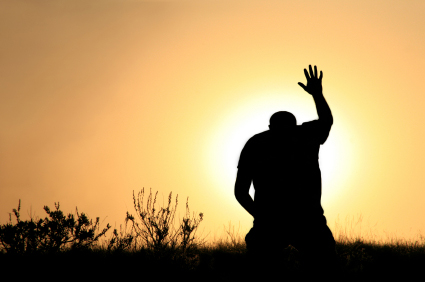
Just after I left home one morning, I noticed a lady walking almost hesitantly and delicately. She wore a cream brocade dress, cream shoes and light brown stockings. She was light skinned and gentle in her appearance and surely out of place. As I came alongside her, I realised she was walking aided by a long walking stick, almost like a shepherd staff, that she held very tightly almost at shoulder level. Her tentative slow steps said that she was either in really bad pain or that she had something wrong with her legs or her back. I decided she needed a ride and stopped.
I’ll call her Mary because I didn’t even get to ask her name. I had to move to level ground and wait for her to get to the car. It took a full minute for her to get situated in the seat behind me. I began wondering: Was there enough space? Was my seat too far back? Would she be comfortable? Should I have asked her to get in on the other side? Even as I wished I could move the seat forward, the length of my legs would mean that I wouldn’t be able to drive. So I waited until she was situated and we could proceed.
Mary was heading to church as she did every Sunday since she had learnt to walk again. Yes, she had just learnt to walk again after two and a half years of being bedridden. Sometime in 2010 she began struggling to sit and get up and extensive medical tests and doctor’s visits couldn’t find a medical reason for this immobility. By 2011 she was fully immobilised and simple things were now impossible for her. She had to be changed, carried around, assisted to the washroom, bathed etc. Additionally, they couldn’t find a house worker who would last more than two weeks because of these demands. For a while her family went out every day and would come and find her exactly where they left her but in a messy situation. Finally, her husband made the choice to move his office home so that he could care for her and this was the beginning of her slow recovery.

There were finally were sent to one of the older doctors who finally made sense of the situation and provided a diagnosis that shocked everyone. Mary was suffering from diabetes and hypertension. The diabetes alone had critically affected her spine and caused the immobility. Diabetes, you ask? Yes. Was this new? Not at all. The diabetes and hypertension had been in her body for a while unbeknownst to her. Her body had unsuccessfully been working extra hard to deal with excess sugar in her blood stream and high blood pressure.
Even more interesting was the fact that neither she nor anyone around her would ever have guessed that she would be suffering from these two diseases. She was unaware of the reality being played out in her body and so wasn’t actively looking for any signs. The doctors she visited had looked in the wrong direction for the diagnosis. Could it be that they were looking for muscular and skeletal issues when the real culprit was in the blood and body function? How was it that for over thirty months no one thought to even consider blood sugar and blood pressure as the cause of the ailment?

www.elivelife.com
This got me thinking about life in general. Sometimes we find ourselves in situations that don’t make sense. We are not as productive as we thought we would be. Our relationships aren’t working as we expected they would. We aren’t as connected as we want. We are lonely, sad and unable to figure it out. We could be well placed in society but totally unfulfilled or we could be at the bottom of the rack wondering how this has come to pass. Whatever the situation, we find ourselves in place that we would rather not be but can’t seem to get out of. In this place, do we really know what ails us? are we aware that something is festering on the inside? Do we need to visit a doctor or diagnose our lives and help us make it work? Just like Mary, we need find another ‘doctor’ who will make all the difference and diagnose us right. This assessment isn’t only for those who are in places they don’t want to be. It is also for those who are in places where good things are happening. Surely we can all do more and do better no matter how good our lives are. We can change more lives, minds and hearts. We can influence more people. We can bring greater glory to God with the gifts He has given us.
One of the best places for diagnosis is a deep personal reflection and assessment. Reflection that asks questions like:
- When did you last feel alive and productive?
- What brings you the greatest joy?
- Who inspires you to pursue greatness and attain the best result you can get from yourself?
- Who can you really count on to tell you the truth about you?
- Can you stand to look at your failures and learn from them?
- Can you stand to accept that you made a mistake or hurt someone or took a wrong turn?
- Can you stand to do better in life?

Looking into our lives and dealing with the things that are holding us back isn’t always the most pleasant thing but it is indeed the best way to find the real diagnosis for our situation and do better. Remember, good or bad, happy or sad…take time to look at your life and find the reason for where you are and change what needs to be changed, find the people who can walk with you, be open to correction and help, do more of what is going well and become all you can be in Christ Jesus.
Shalom
